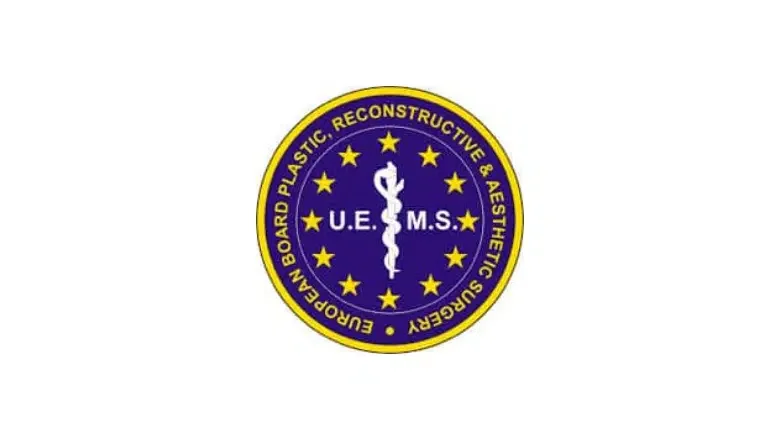Embarking on the female-to-male (FTM) transition is a deeply personal and transformative journey. Numerous procedures can assist in aligning your physical appearance with your true gender identity, helping you to feel more comfortable and confident in your own skin. One significant step many transgender men consider is an FTM mastectomy—a surgical procedure aimed at removing unwanted breast tissue to create a more masculine chest contour.
Undergoing an FTM mastectomy is not just a physical alteration; it’s a monumental stride towards living authentically. This surgery can have a profound impact on your mental and emotional well-being, fostering a stronger sense of self and improving overall quality of life. However, like any major surgery, it’s crucial to be thoroughly prepared and informed before taking this step.
Understanding what lies ahead can make a significant difference in your surgical experience and recovery process. Being well-informed empowers you to make the best decisions for your health and helps set realistic expectations. Here are four essential aspects you should know before proceeding with your FTM mastectomy in London. Gaining insight into these areas will aid in achieving optimal results and ensuring a smoother, more comfortable recovery journey.
1 – Understanding the Fundamentals of FTM Mastectomy
A pivotal step in the journey of many transgender men is undergoing a subcutaneous mastectomy. Often one of the first surgical procedures chosen, this operation involves removing breast tissue to achieve a flatter, more traditionally masculine chest contour. Commonly referred to as FTM top surgery, this procedure is instrumental in helping individuals feel more aligned with their gender identity and can significantly enhance comfort and confidence in everyday life.
RELATED: FTM/N Top Surgery FAQs
FTM top surgery isn’t a one-size-fits-all operation; there are several surgical methods available to accommodate the diverse needs of each person. Factors such as chest size, skin elasticity, and personal aesthetic goals play a crucial role in determining the most suitable technique. Surgeons work closely with patients to customise the procedure, ensuring that the chosen method best meets their unique requirements and aspirations. This personalised approach helps in achieving optimal results and contributes to a more satisfying transition experience.
2 – Exploring the Various Techniques of FTM Mastectomy
When considering a female-to-male (FTM) mastectomy, understanding the different surgical procedures available is crucial. Each method offers unique benefits and is tailored to meet the specific needs of the individual. By familiarising yourself with these techniques, you can make an informed decision that aligns with your body type and aesthetic goals.
Double Incision Mastectomy
One of the most commonly performed procedures is the bilateral or double-incision mastectomy with nipple grafts. This technique is particularly effective for those who have a significant amount of breast tissue or excess skin. During the surgery, two horizontal incisions are made across the chest, allowing the surgeon to remove all the underlying breast tissue and any surplus skin. This comprehensive removal facilitates the creation of a flatter, more traditionally masculine chest contour. An essential aspect of this procedure is the modification and repositioning of the nipples. The nipples are typically resized and grafted back onto the chest in a more masculine position, enhancing the overall aesthetic outcome. While this method does result in scarring along the incision lines, many patients find the trade-off acceptable due to the significant changes in chest appearance it provides.
RELATED: What Is A Double Incision Mastectomy?
Periareolar Mastectomy
Another surgical option is the periareolar mastectomy, often referred to as the keyhole procedure. This technique is generally recommended for individuals with smaller amounts of breast tissue and good skin elasticity. The surgery involves making a small incision around the edge of the areola, through which the breast tissue is removed. One of the primary advantages of the periareolar method is the minimal scarring it produces, as the incision is discreetly placed along the natural border of the areola. Additionally, because the skin maintains its elasticity, it can retract naturally after the tissue is removed, negating the need for excess skin removal. However, this procedure offers limited ability to reposition the nipples, making it less suitable for those who require significant nipple adjustment to achieve their desired look.
Each of these procedures has specific considerations that should be thoroughly discussed with your surgeon prior to making a decision. Factors such as the amount of tissue to be removed, skin quality, nipple size and position, and your personal expectations all play a vital role in determining the most appropriate surgical approach. By engaging in an open dialogue with your healthcare provider, you can ensure that the chosen method aligns with your transition goals and sets the stage for satisfactory results.
3 – Essential Postoperative Care Following Your FTM Mastectomy
The journey to achieving the desired results from your FTM mastectomy extends beyond the operating theatre; it is significantly influenced by the care you commit to during your recovery period. Proper post-operative care is not just a recommendation but a crucial component that determines the effectiveness of the surgery and the quality of the final outcome. By dedicating time and attention to your healing process, you enhance your body’s ability to recover swiftly and minimise potential complications.
RELATED: Recovery after FTM/N Top Surgery
Our surgeons typically provide patients with compression garments designed specifically to support the healing chest area. These garments play a vital role in reducing swelling, preventing fluid buildup, and minimising scarring. Wearing them as directed helps maintain the new chest contour and promotes better circulation, which is essential for healing tissues. It’s important to adhere to the guidelines on how long and how often to wear these garments to maximise their benefits.
Hygiene practices, especially when showering, require special attention during the recovery phase. To prevent infections and avoid causing trauma to the surgical sites, it’s advisable to keep water from directly hitting the treated areas. Instead, allow water to flow gently over your body without targeting the chest area. Using mild, fragrance-free soaps can also reduce the risk of irritation. After showering, carefully pat the areas dry with a clean, soft towel, ensuring not to rub or apply pressure, which could disrupt the healing incisions.
Proper wound care extends to the diligent application and changing of dressings. Keeping the surgical sites clean and protected is paramount in preventing infections and other complications. Follow the specific instructions provided for cleaning the wounds and changing dressings, including the types of products to use and how frequently to change them. This meticulous care supports the natural healing process and contributes to less noticeable scarring in the long term.
Your surgeon will furnish you with detailed, personalised instructions tailored to your individual case. These guidelines are designed to address your unique needs and optimise your recovery. It’s essential to follow them closely and reach out to your healthcare provider if you have any questions or concerns. They can offer additional advice or adjustments to your care plan if necessary. By committing to these post-operative care steps, you play an active role in ensuring the best possible results from your mastectomy and promoting your overall well-being.
4 – Private Insurance Coverage for FTM Mastectomy in the UK
Securing financial support for female-to-male (FTM) mastectomy procedures through private insurance in the UK can often be a complicated and daunting endeavour. Many individuals embarking on their transition journey hope to alleviate the financial burden by utilising their private health insurance. However, the reality is that obtaining coverage for FTM mastectomy is frequently challenging, primarily because numerous insurance providers categorise this surgery as a cosmetic procedure rather than a medically necessary one.
RELATED: How Much Does FTM Top Surgery Cost in the UK?
The classification of FTM mastectomy as cosmetic means that insurance companies may deem the surgery elective, thereby excluding it from standard coverage policies. This perspective overlooks the significant psychological and emotional benefits that gender-affirming surgeries provide to transgender individuals. The disconnect between the medical necessity recognised by doctors and the policies upheld by insurance companies often leaves patients facing substantial out-of-pocket expenses.
Despite these obstacles, it’s essential to thoroughly review your insurance policy documents and engage in open communication with your provider. Some insurance companies may offer partial coverage or have specific plans that include transgender healthcare services. Advocating for yourself by presenting medical endorsements from your healthcare providers can sometimes influence the insurance company’s decision, highlighting the surgery’s importance for your mental health and well-being.
Additionally, exploring different insurance providers and comparing their policies on transgender healthcare can be beneficial. Some companies are progressively recognising the need for inclusive coverage and may offer plans that accommodate gender-affirming procedures. Consulting with a legal advisor or a patient advocate who specialises in transgender healthcare rights can also provide guidance and support during this process.
Why Choose Centre for Surgery for Gender Affirmation Surgery?
At Centre for Surgery, we understand that gender affirmation surgery is a deeply personal and life-changing journey. Our goal is to support every individual through this significant step with unparalleled care, expert knowledge, and a commitment to delivering exceptional results that help you feel more at home in your own body. With our team of highly skilled surgeons and healthcare professionals, we are dedicated to providing compassionate, patient-centred care tailored to your unique needs and goals.
RELATED: Transgender Surgery FAQs – What to Consider Before Getting Top Surgery
Our clinic, situated in the heart of London on Baker Street, offers a welcoming and confidential environment where you can feel safe discussing your transition. We take pride in our comprehensive approach to gender affirmation, ensuring that all our procedures are performed with the utmost precision and attention to detail. From FTM mastectomy (top surgery) to other gender-affirming procedures, our surgeons are well-versed in the latest techniques and approaches to provide natural, long-lasting results that align with your identity.
Our team is not just skilled in surgical procedures—they are also deeply passionate about patient care and support. We understand the physical, emotional, and social aspects of gender transition and strive to offer guidance and reassurance every step of the way. Each patient’s journey is unique, and our surgeons work closely with you to develop a personalised surgical plan that takes into account your individual preferences, body type, and desired outcomes. You can meet our dedicated and experienced team by visiting our Meet the Team page.
For those concerned about the cost, Centre for Surgery offers a range of finance options, including 0% APR financing through Chrysalis Finance, making your gender affirmation surgery more affordable. You can find more details on our Finance Options page, which explains how we work with you to ensure that financial considerations do not become an obstacle in achieving your goals.
To gain further insights into gender affirmation surgeries, our Plastic Surgery Blog is an excellent resource. We regularly update the blog with in-depth articles, advice, and real-life patient experiences to help you better understand the procedures and the benefits they can offer. For more detailed answers to common questions, you can also explore our Clinic FAQs, providing all the information you need for your journey.
Patient Testimonials
“I had my FTM mastectomy done at Centre for Surgery, and it was truly a life-changing experience. The staff made me feel comfortable from my first consultation, and my surgeon took the time to answer all my questions and concerns. The results were better than I ever imagined, and I finally feel at peace with my body. Thank you!” — A.H.
“Centre for Surgery has a wonderful team who genuinely care about their patients. From my initial consultation to my post-surgery follow-up, I felt supported every step of the way. The surgery went smoothly, and the outcome exceeded my expectations. I would highly recommend them to anyone considering gender affirmation surgery.” — T.J.
“My experience at Centre for Surgery was nothing short of incredible. The team’s professionalism, expertise, and understanding made a world of difference. The surgery was seamless, and I felt truly seen and respected. I can’t thank the staff enough for helping me become the person I’ve always wanted to be.” — S.P.
Book a Consultation
We invite you to take the first step towards a new chapter in your life by booking a consultation with our expert surgeons. We’re here to provide all the information you need and to guide you through your options in a friendly, supportive manner. Contact us today:
📞 Phone: 0207 993 4849
📧 Email: contact@centreforsurgery.com
📍 Address: 95-97 Baker Street, London W1U 6RN
Learn more about why Centre for Surgery is the best choice for gender affirmation surgery by visiting our About Us page, where you can read about our philosophy, approach, and commitment to exceptional patient care. For any additional questions or to arrange a visit to our clinic, please don’t hesitate to reach out. We look forward to being part of your transition journey.










